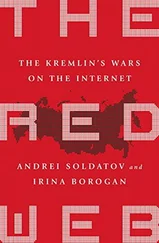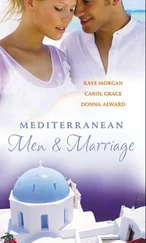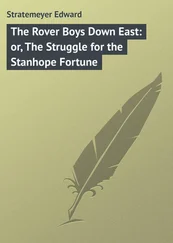This book does not assume that the unity of the Mediterranean rested on deep structures. Rather it suggests that any such unity was fleeting. The Mediterranean was the product of competing notions of thalassocracy–‘rulership of the sea’. These ideas were ebbing away by the late 1940s. Whilst belief in the Mediterranean existed, however, there were genuine attempts to wield pan-Mediterranean authority. This is a history of the Mediterranean told from the point of view of those who attempted to rule it. Their Mediterranean was a crucible of modernity. The key features of the Mediterranean crisis–shifting coalitions held together by contingent loyalty, information warfare, the projection of air and sea power, civil war and terrorism–remained crucial long after the Mediterranean itself had become a fantasy of western tourist brochures.
Eyeless in Gaza, Aldous Huxley’s 1936 novel, opens with a metaphor for the Mediterranean: the lazy, ripe, sea-girt lands, beloved of travellers, and Mussolini’s hell-hole. Two sunbathers’ eyes are drawn to the west, to ‘a blue Mediterranean bay fringed with pale bone-like rocks and cupped between high hills, green on their lower slopes with vines, grey with olive trees, then pine-dark, earth-red, rock-white or rosy-brown with parched heath’. To the east they observe ‘the vineyards and the olive orchards mounted in terraces of red earth to a crest’. The ‘sunlight fell steep out of flawless sky’, and they dozed, until ‘a faint rustling caressed the half-conscious fringes of their torpor…and became at last a clattering roar that brutally insisted on attention’. Annoyed, they closed their eyes once more, ‘dazzled by the intense blue of the sky’. Suddenly, ‘with a violent but dull and muddy impact the thing struck the flat roof a yard or two from where they were lying’. ‘The drops of a sharply spurted liquid were warm for an instant on their skin, and then, as the breeze swelled up out of the west, startlingly cold.’ ‘In a red pool at their feet lay the almost shapeless carcass of a fox-terrier. The roar of the receding aeroplane had diminished to a raucous hum, and suddenly the ear found itself conscious once again of the shrill rasping of the cicadas.’ Eyeless in Gaza prophesies a Mediterranean war in 1940. 1
Huxley’s aeroplane was indeed an apt metaphor for Italian Fascism. Sowing chaos from the air was central to Mussolini’s regime. 2 Il Duces collected writings and speeches on the subject were published in March 1937. 3 Flying was dynastic aggrandizement for Mussolini. When he took flying lessons in the 1920s he took his sons, Vittorio and Bruno, to the aerodrome. In 1935 the Mussolini clan ‘volunteered’ to fly in the conquest of Abyssinia. Vittorio Mussolini was nineteen, Bruno only seventeen but worthy of bombing Abyssinians. Their cousin, Vito, son of Mussolini’s late brother, went as well. They were chaperoned by Galeazzo Ciano, the husband of Vittorio and Bruno’s sister, Edda. ‘We have carried out a slaughter,’ Ciano boasted. Vittorio’s shadowed autobiography was rushed out in celebration. He admitted to being a little disappointed by his first bombing raid; the Abyssinians’ feeble huts collapsed without any spectacular strewing of rubble. The Mussolini boys were not, however, good pilots: their true love was brothels rather than aerodromes. On their return from the front they lorded it around Rome, raping girls, crashing fast cars and treating the professional head of the Regia Aeronautica, Giuseppe Valle, like a flunkey. 4 Only Ciano stayed the course, returning to Abyssinia for the final victory in the spring of 1936. The fawning Italian press gave his exploits so much coverage that eventually he ordered them reined in lest he become a laughing stock at his golf club. 5 Nevertheless, Ciano, at the age of thirty-three, emerged from Abyssinia as the ‘hero’ of the dynasty. In the summer of 1936 Mussolini not only made him Italian foreign minister but put him in charge of the Fascist project for Mediterranean conquest. 6 Ciano was a monster: vain, corrupt and murderous. Nevertheless, most people liked his ‘winning ways’. 7 He was good-looking and fun to talk to. Ciano had a low, and usually accurate, opinion of his fellow man, Fascist, Nazi or democrat. He had a gift for self-reflection, as well as self-deceit. Both characteristics were reflected in a diary he began to keep, with Mussolini’s blessing, once he had firmly established himself at the foreign ministry.

Mussolini ‘dropped the dog’ on 3 October 1935 when Italy invaded Abyssinia. The Mediterranean may not have been a peaceful place in the decade before 1935: monarchy was overthrown in Spain, but preserved by a military dictatorship in Greece; the French ruthlessly suppressed colonial peoples in Morocco and Syria; terrorists murdered their ethnic enemies in Yugoslavia and Palestine. Its quarrels were, however, parochial. The Mediterranean itself played little part in these struggles beyond that of a means of departure and arrival. It was Mussolini’s challenge to Britain that plunged the Mediterranean as a whole into its fourteen-year crisis.
The British described their Mediterranean as an ‘artery’. 8 Armies and navies made the passage to the East through the artery, raw materials, tin, rubber, tea and, above all, oil, made their way west. On any given day in the mid-1930s the tonnage of British shipping in the Mediterranean was second only to that found in the North Atlantic. The Mediterranean was not, however, Britain’s only arterial route. Many of the same destinations could be reached by sailing the Atlantic–Indian Ocean route around Africa via the Cape of Good Hope. The Mediterranean’s chief attraction was speed. A ship steaming from the Port of London to Bombay would take a full fortnight longer, and travel nearly 4,500 miles more, to reach its destination if it did not pass through the Mediterranean.
The British artery had three main choke points: Gibraltar, Malta and Port Said. The first port of call for a ship entering the Mediterranean was Gibraltar. Seven million tons of commercial shipping called at Gibraltar every year. The Rock, a mere one-and-seven-eighths square miles in area, had been a British possession since the early eighteenth century. It housed a large naval base for the use of the Home Fleet. Nearly a thousand miles to the east, the small island of Malta lay at a point almost equidistant between Gibraltar and the entrance to the Suez Canal at Port Said in Egypt. It also sat astride the narrowest point in the Mediterranean, the Strait of Sicily. Valletta was one of the great harbours of the world, providing the main base of the Mediterranean Fleet, comprising, at the beginning of 1935, five battleships, eight cruisers and an aircraft-carrier. Apart from its strategic importance, the British dominance of Malta irritated Mussolini. In the early 1930s the British started a campaign to encourage the Maltese language to replace Italian in the schools and law courts. 9 Pro-Italian Maltese ‘traitors’ were imprisoned, and Italian diplomats were expelled from the island for indulging in subversion and espionage. Italian was expunged as a legitimate language. 10
A few ships left the main artery at Malta and headed into the northeastern Mediterranean, to the British possession of Cyprus, ‘off the main track of sea communications…unfortified and garrisoned only by native police, together with one company of British troops’. Unlike Gibraltar and Malta, Cyprus had a large land mass capable of supporting a substantial population–nearly 350,000 in 1935. Its coast was dotted with harbours but they were little more than ‘open roadsteads’ or ‘small and silted up’. The only substantial port was Famagusta on the east of the island. In the mid-1930s the British did consider turning Famagusta into a major naval base. 11 In the end they decided that Cyprus was ‘out of the question for the immediate needs of the moment’. A base at Famagusta would have taken over a decade to complete. 12
Читать дальше













